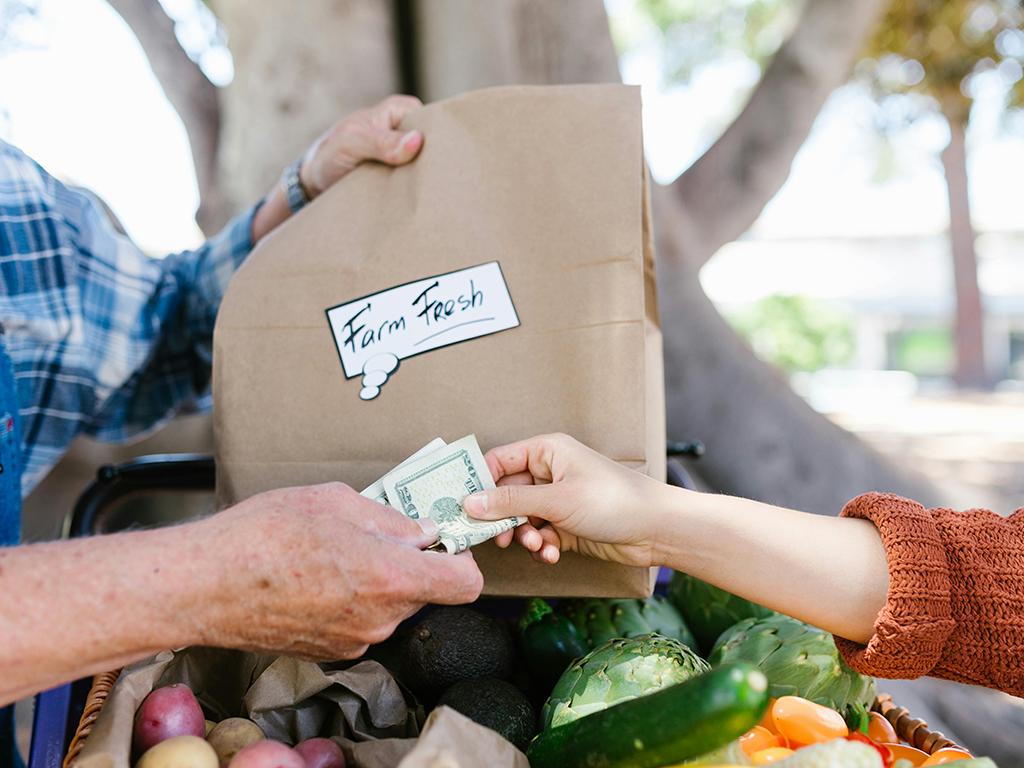Young voters under 30 are the least affiliated with a particular party (38% say they are independent or unaffiliated). They are also the least likely to vote (nearly half sat out of the last presidential election). In what is projected to be a tight presidential election in just a few days, getting young voters to the polls could make the difference for either candidate. But only 1 in 3 say they feel prepared to research candidates or issues. As Election Day approaches, we’ve enlisted OHIO faculty experts to help define some of the hot topics of the 2024 election (like tariffs and gerrymandering).
Additional information about OHIO’s ongoing commitment to fostering a civically engaged community as part of this year’s election cycle, including student resources, educator resources and frequently asked voter questions, is available online.
What is inflation?
Ohio University College of Arts and Sciences Associate Professor of Economics and inflation expert Dr. Roberto E. Duncan says in simple terms “inflation happens when the prices of most things we buy, like goods and services, steadily increase over time.”
Duncan has observed Consumer Price Index (CPI) inflation driving up the price of everyday goods over the past four years. The U.S. Bureau of Labor Statistics defines CPI as “a measure of the average change over time in the prices paid by urban consumers for a market basket of consumer goods and services,” with “market basket” referring to a constant set of consumer products and services valued on an annual basis and used to calculate the consumer price index.
Things like energy prices—particularly gasoline and natural gas—and food prices, both for groceries and dining out have been major contributors to CPI inflation, according to Duncan. However, he noted that since late 2022, the rate of price increases for things like gas and groceries has been declining.
What are the candidates saying?
The results of the Bankrate survey are no surprise to the those who are running for office. Both major party 2024 presidential candidates have discussed how their proposed economic policies would help curb inflation.
Former President Donald Trump’s economic plan centers on a radical shift in trade policy, plans to eliminate taxes on tips and Social Security benefits as well as a proposal to significantly reduce the corporate tax rate, according to Time. Trump asserts that these measures will not only restore jobs to American soil but also reduce inflation. Additionally, Trump has said he wants a more direct role in managing the Federal Reserve, telling CBS News “I feel the president should have at least (a) say in there.”
Vice President Kamala Harris proposes addressing higher prices at the grocery store by attacking what she says is price gouging by large grocery corporations, according to CBS News. Harris says she wants to target businesses that aren't "playing by the rules" and ensure there's competition in the industry to bring down costs. Her strategy also involves promoting housing affordability, reducing healthcare costs as well as revising Trump’s signature tax cuts. She told Time “we will create what I call an opportunity economy. An opportunity economy where everyone has a chance to compete and a chance to succeed.”
Is inflation getting worse?
In recent years, Americans have bemoaned the pandemic-related increase in the prices of seemingly everything. This has left many voters wondering still in 2024 whether there's an end in sight.
“The CPI inflation rate peaked at around nine percent in mid-2022, followed by a downward trend, reaching about three percent by June 2023. Since then, it has fluctuated around three percent, but during the summer months (June to August), it averaged slightly below three percent,” explained Duncan. “Food price inflation has been even lower, at around two percent, which aligns with the Federal Reserve's target for overall inflation.”
Looking ahead, Duncan expects we’ll likely see similar or slightly lower inflation rates over the next few months. This means that while essential goods may continue to see price increases, these increases are expected to be more moderate over time.
Why do we have inflation?
According to Duncan, the price of everyday items like groceries and gas can rise for several reasons, which can broadly be classified into demand and supply factors.
“On the demand side, increased spending by households and government can push prices higher, contributing to overall inflation,” said Duncan. “On the supply side, disruptions in supply chains or rising production costs—such as persistently high oil prices—can also drive grocery prices up.”
Since the post-COVID-19 period, supply-side factors have played a particularly significant role in inflation within the U.S. economy. Duncan also noted that additional factors like fiscal and monetary policies, consumer and business expectations and external global shocks influence inflation through supply and demand channels.
Have wages kept up?
On average, wages have kept pace with rising living costs when comparing average hourly earnings before the COVID-19 pandemic to the most recent data from this year.
“We see that wages have grown by about 28 percent, while accumulated inflation has been around 23 percent,” explained Duncan. “This suggests that, on average, wages have kept pace with rising living costs, and purchasing power has even increased slightly.”
However, Duncan emphasized that this is an average calculation, which can obscure differences across various sectors and wage growth may vary significantly depending on the industry, with some sectors experiencing higher or lower increases than the average.
Why aren’t prices going down?
A common misconception Duncan sees among Americans is the difference between prices and inflation. Specifically, the distinction between lower inflation and deflation. Many assume that when inflation drops, it means prices will decrease. This is not the case.
“While we have been observing lower inflation rates since mid-2022, this doesn’t mean there’s a generalized reduction in prices,” said Duncan. “A decrease in prices would be negative inflation, also known as deflation. Lower inflation, on the other hand, means that prices are still rising, but at a slower rate than before.”



